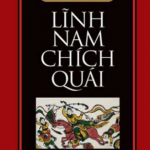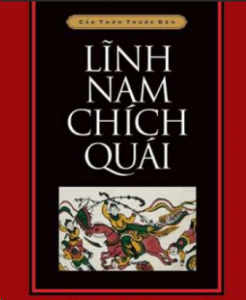Lễ ra mắt Truyện Kiều bản Tiên Điền mới.


Thử lọc bỏ các yếu tố hoang đường trong truyền thuyết về Sơn tinh-Thủy tinh
Ngày 09/12/2024.
===
Nhưng nói thế vẫn chỉ là lý thuyết xuông mà thôi … Nên bây giờ tôi xin lấy một ví dụ cụ thể là truyện Sơn Tinh Thủy Tinh tức Truyện thần núi Tản viên Trong Lĩnh Nam Chích quái, ngay Đại Việt sử ký toàn thư cũng cho đây là chuyện quái đản.
Tôi sử dụng bản dịch của Đinh Gia Khánh-Nguyễn Ngọc San, copy trích lại từ trang https://thuviensach.vn/pdf/viewer.php?id=2ebd5c
Vương lấy lưới sắt ngăn ngang sông huyện Từ Liêm. Thủy Tinh bèn mở một dải sông Tiểu Hoàng Giang từ Lý Nhân ra Hát Giang, vào sông Đà Giang để đánh ập sau lưng núi Tản Viên. Lại mở ngách sông Tiểu Tích Giang hướng về trước núi Tản Viên, đi qua Cam Giá, Xa Lâu, Cổ Hào, Ma Sá ở khoảng ven sông đánh sụt thành cái vũng lớn để
Xin các nhà địa chất học và khảo cổ học cho ý kiến là có thể dùng phương pháp khoa học nào để xác định dải sông Tiểu Hoàng Giang và ngách sông Tiểu Tích Giang có dấu vết đào nhân tạo không ? hoặc xác định là dòng chảy hai sông đó đã hình thành do một sự kiện lụt lội ở thời đại nào đó ?
Theo tôi nghĩ phe “Thủy Tinh” không cần đào mới toàn bộ 2 sông đó, mà do thời xưa đồng bằng Bắc bộ còn thấp, phần lớn diện tích là ao hồ, chỉ cần thuận theo thế đất, đào phá một số đoạn gò hay vồng đất cao nối các vùng hồ đầm là có thể tạo một dòng chảy mới dẫn nước lụt được … không cần phải phép thuật thần tiên quỷ quái gì cả …
* Ghi chú thêm :
1. Khảo trên bản đồ Google thì Hoàng Giang là con sông chạy ngang thành Cổ Loa, gần đó cũng có địa danh Lý Nhân. Việc nhóm Thủy tinh mở (đào) nhánh sông tiểu Hoàng Giang ra sông Hát có thể chính là ra sông Hồng đoạn phía trên vùng Từ Liêm, lý do là vì dòng chảy chính của sông Hồng thời xưa là sông Hát, nên đoạn sông Hồng phía trên Từ liêm (nơi sông Hát nối vào sông Hồng) cho đến tận Bạch Hạc khi đó được tính là sông Hát (!), từ ngã ba Bạch Hạc có thể rẽ vào sông Đà để đánh vào phía sau núi Tản Viên như truyền thuyết viết được.
2. Kết hợp các thần tích về thần núi Tản Viên (tức Sơn Tinh, có thần tích ghi tên là Nguyễn Tuấn), không nói gì chuyện đánh nhau với Thủy Tinh mà chỉ ghi việc giúp vua Hùng đánh lại nhóm An Dương Vương Thục Phán, thì có khả năng nhóm Thủy Tinh chính là nhóm An Dương Vương, khi đó định cư ở vùng phía bắc sông Hồng, trung tâm là Cổ Loa, đối diện với Hà Nội ở bờ Nam sông Hồng.
3. Vùng Cổ Loa hình như không có dấu tích gì của nhóm Tày-Nùng cả, việc gán cho An Dương Vương là dân gốc Tày-Nùng cần xem xét lại, vì người Thục vốn ở vùng Thành Đô, là một nhóm phi Hán-Tạng, nhưng cũng không phải Tày-Nùng, dữ liệu di truyền ADN của dân “Hán” ở Thành Đô hiện nay có tỉ lệ haplogroup M88 khá cao, mà M88 là nhóm ADN đặc thù của người Kinh.
Chữ Nôm, Thái, Chăm – Application Privacy Statement
Introduction
This privacy statement describes how we use data in our browsers, websites, and services. Some of the data we use is considered “personal data” under applicable law. However, even when we use personal data, we generally have no way of actually identifying you as an individual, and our users are essentially anonymous to us.
The specific categories of data that we collect, use, or otherwise process can vary from product to product, from one purpose to another, and in some cases based on your location. This privacy statement sets out when, how, and why we process your data (including but not limited to personal data), as well as your rights under applicable law.
Definitions
First, let’s define some key terms. Many of these definitions are adapted (with changes) from the General Data Protection Regulation (or “GDPR”), the data privacy law which applies in the European Union as well as in Norway. We use the GDPR as a guidepost because it applies directly to our European companies and because we believe it sets the highest legal standard for user privacy. However, in some cases we have simplified definitions here for the purpose of clarity.
Personal data: “any information relating to an identified or identifiable natural person” as the GDPR says. This includes data such as your IP address, device IDs, advertising IDs, and location. Below where we describe how we process personal data, we also list the specific purpose for doing so, as well as our legal basis under the GDPR (as those terms are defined below).
Data controller: The person or company that decides whether and how to process personal data.
Data processor: Someone who processes personal data on behalf of a data controller.
Legal basis: the specific legal grounds we use for processing personal data. The GDPR sets out six specific grounds for processing personal data. The ones most relevant to our Applications are as follows:
Consent: When we process personal data based on your consent, that means you’ve expressly given us permission to do so.
Contractual grounds: When we process personal data because it is necessary to perform a contract, for example to provide you with a service as described in our Terms of Service or some other agreement.
Legitimate interest: When we process personal data based on legitimate interest, that means we have some use for the personal data (such as monetization, or ensuring that products work properly) which is in balance with your right to privacy.
Legal compliance: In some instances it is necessary for us to process personal data in order to fulfill other obligations under the law, for example detecting fraud, making sure you are who you say you are, etc.
Applications: the specific apps we offer, as mentioned below, including our desktop and mobile browsers.
Monetization: making money. Nearly all of our Applications are free to download and use. Therefore we monetize our products in various ways, mostly by selling advertising within the Applications themselves. The money we make helps us keep the lights on, pay the salaries of our staff, and continue developing the most innovative, independent browsers on the market. However, when we monetize our Applications, we never sell our users’ personal data to anyone.
Purpose: the specific reason or reasons we have for processing personal data.
Process or processing: collecting or using personal data. As defined in the GDPR, the word “processing” can mean doing almost anything with personal data. Below we have used it in this general sense when we have a general meaning in mind, and used more specific terms (like “store” or “share”) where appropriate.
Retention / retain: the time period for which we will continue to store data. In general, we do not process or store personal data longer than needed and therefore delete it after a certain period of time. Below we have included some more specific details on retention periods, which vary depending on the type of personal data at issue and the purpose for which it is processed.
Applications
The kinds of data (including personal data) that we process vary a great deal depending on which applications you use. You can read more about how each of our products processes data below.
General Topics
Data Controller & Internal Processing
My Applications are developed and published by self, not any data controller.
Children’s Privacy
There are no guarantees that children cannot enter our websites or use my applications without parental consent or notification. Therefore, and as provided in my End User License Agreements, we require children to include their parents in the download process, and I encourage parents to read this privacy statement before allowing their children to use our applications and services.
Contacts
If you have any questions about this statement or any privacy issues in my applications, feel free to contact to my mail :
fanzung@gmail.com


